Nvidia's plugging the price gap
Graphics cards are funny ol'things, somehow
translating little bits of code into beautiful vistas full of gun-toting aliens
and the like. Funnier still, and probably far more mysterious, are the naming
conventions employed for them. I'm trying to get a handle on the way Nvidia has
named its latest generation of graphics cards. I'm also feeling a minor stroke
on the way such is the pressure building behind my eyes as I try to fathom the
depths of marketing strategies.
It all got rather complicated for me when
Nvidia brought back that blasted 'Ti' moniker, and this GTX 650 Ti is making
things even more complex.
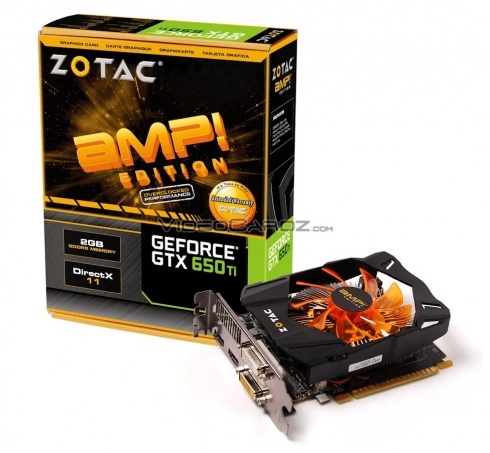
For a start, although you might assume the
600 series of cards are all based on the new 28nm Kepler architecture, actually
there's a whole host of old school Fermi cards around. The GT645, some GT640s,
some GT630s and anything with lower 6 series numbering are all based on the
ageing Fermi architecture.
My brain... dying
Then you've got the GTX 660 and GTX 660 Ti,
which use completely different GPUs. The same thing has happened here with the
original GTX 650 and this Ti version. The original GTX 650 uses the rather weak
GK107 GPU, the same dual SMX version that was used in some GT 640s, except with
a higher clock speed to push it a little more towards the gamers. This GTX 650
Ti has the same layout as the basic GTX 660, using the same GK 106 GPU, but
with one less SMX module and eight ROPs having gone missing... confused yet?
Still, the fact remains Nvidia needed a
card to plug the price gap between the GTX 660 and the GTX 650, and at around
$220 this card sits relatively well between them. If you've got a budget of
$240 then the GTX 650 Ti, especially Zotac's AMP! Edition, is going to be your
best chance of getting a decent gaming experience at 1080p resolution.
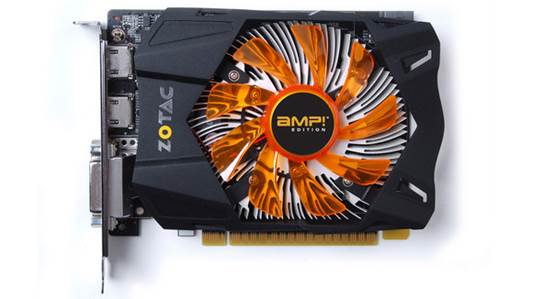
Two gigabytes of graphics memory is fast
becoming the least you want in your gaming GPU, so it's a gamble whether you
want to take a punt on something like the slightly hobbled 1GB version of the
HD 7850 for the same price.
The next step down is the HD 7770 and
there's a 2GB version around for $208, but I don't think you're really going to
squeeze enough out of the Cape Verde GPU to keep up with the GK 107.
A tougher call is if you're willing to
spend more. You can always drop more cash and get better performance, but for
around $32 extra you can pick up a full-fat HD 7850. Actually, by the time you
read this, they might be even cheaper... That Radeon HD 7850 is a sterling card
and for the current price is a great performer. In terms of relative
performance compared with this GTX 650 Ti - even an overclocked one -the scores
don't come out favourably for Nvidia.
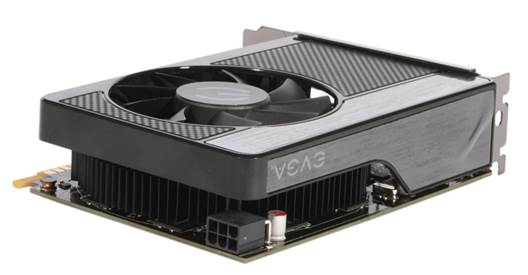
You'd always expect the pricier card to
perform better, but for that $32 you're getting 25 per cent extra in Batman:
Arkham City, 45 per cent in DiRT Showdown and a mammoth 75 per cent boost for
Max Payne 3. That's not a bad return for the extra cash, I'm sure you'll agree.
Technical analysis
Compared with the $160 HD 7770, the Nvidia
card has the edge, but only by a little in most tests. The gap between the GTX
650 Ti and the HD 7850 is much smaller in terms of cost, but far greater in
terms of a performance delta.
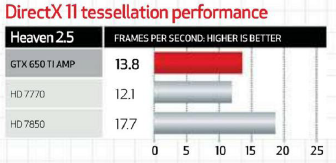
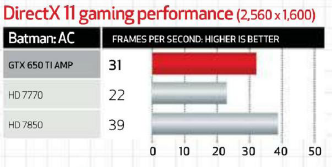
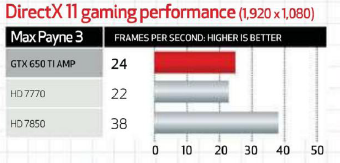
|
Vital statistics
§ Price:
$230.4
§ Manufacturer:
Zotac
§ Web
www.zotac.com
§ GPU:
GK106
§ CUDA:
Cores 768
§ Clock
speed: 1,033MHz
§ Memory
capacity: 2GBGDDR5
§ Memory:
bus 128-bit
§ ROPs:
16
|